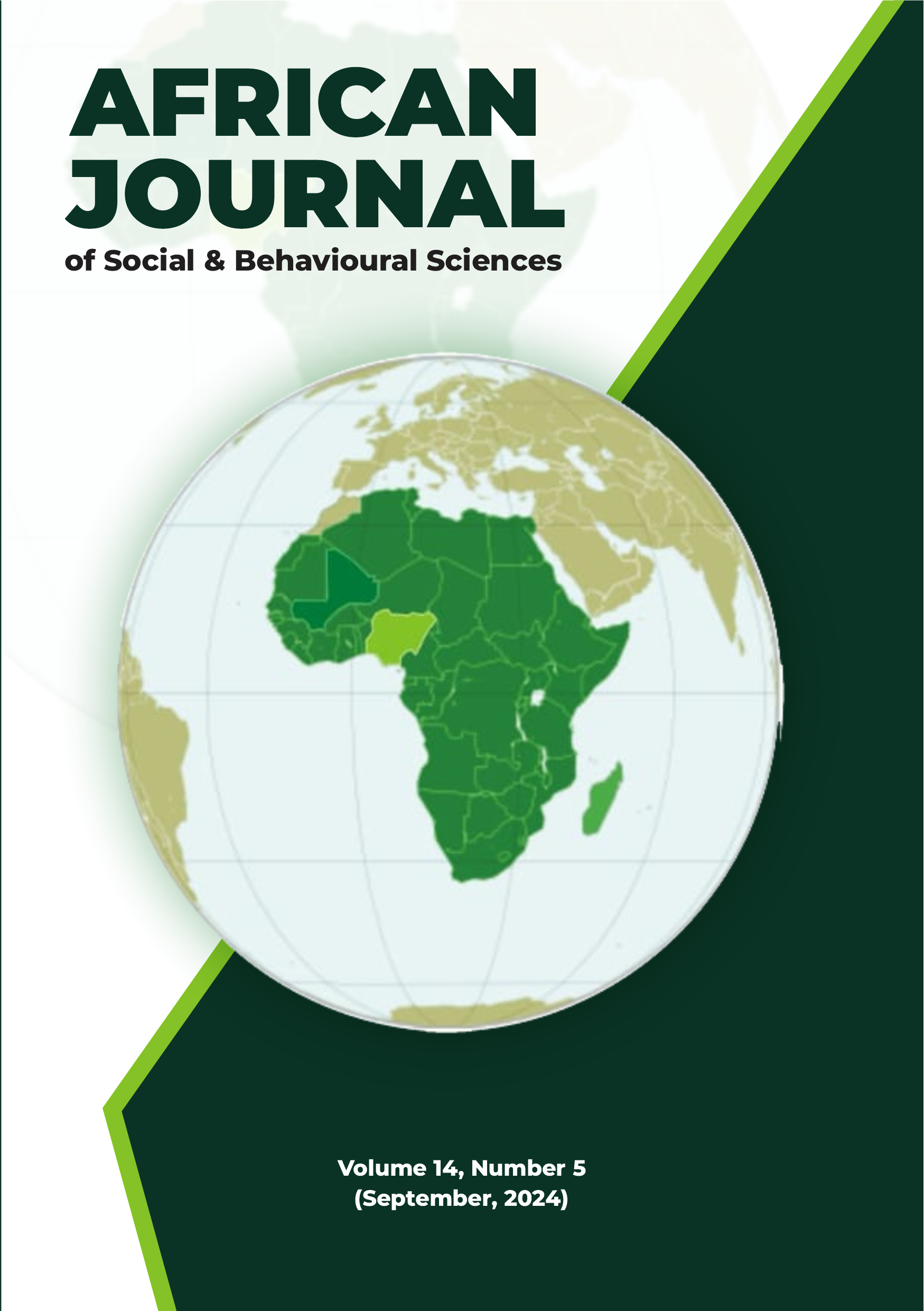SOCIOECONOMIC DETERMINANTS OF CONTRACEPTION AMONG MARRIED WOMEN IN SUB-SAHARAN AFRICA
Keywords:
Socioeconomic, Contraception, Married, Women and sub-Saharan AfricaAbstract
Low contraceptive uptake in the face of high fertility norms in sub-Saharan
Africa has continued to create developmental challenges in the region. This study examined
the literature on socioeconomic determinants of contraception among married women in sub-
Sahara Africa. Desk review of thirty-three (33) relevant literature extracted through Google
Scholar and key words such as socioeconomic, determinants, contraception, married women,
aged 15-49 and sub-Saharan Africa was employed after filtering irrelevant articles to achieve
the objective of the study. The study showed that the fertility rate is still high in the region
because of the low contraceptive prevalence rate. The high fertility and low contraceptive rate
will lead to population explosion and further deepen the poverty level of the region. The study
further showed a gradual improvement in the prevalence of contraceptives and the adoption of
long-acting reversible and nonreversible methods such as Intra-uterine devices, implants and
sterilization. This will substantially reduce fertility rate and hence pave way for economic
growth and development in the area. Moreover, the study showed that urban-rural gap in
contraceptive use still subsists in the region except in situations where there are intervention
programs such as counselling of married women, distribution of family planning products for
free, payment of allowances to women who are able to reduce the number of children they bear
and counselling of breastfeeding women on reproductive issues. The major factors that
determine contraceptive uptake are education, residence, cultural influence such as desire for
children and son preference, misconception and erroneous beliefs about contraception. The
study recommends that the governments make education free and compulsory at both primary
and secondary schools especially for women. Family planning counselling should be offered
to women especially in rural areas to bridge urban-rural gap in family planning uptake.
Governments in the region should educate the masses on the danger of having too many
children as well as the benefits of family planning programs. Programme interventions that
target married women such as tax relief and allowances to those who have fewer children
should be implemented to encourage contraceptive uptake in the region. In addition, policies
aim at encouraging the use of long-acting reversible and nonreversible methods such as
implants, intra-uterine device and sterilization should be implemented to


